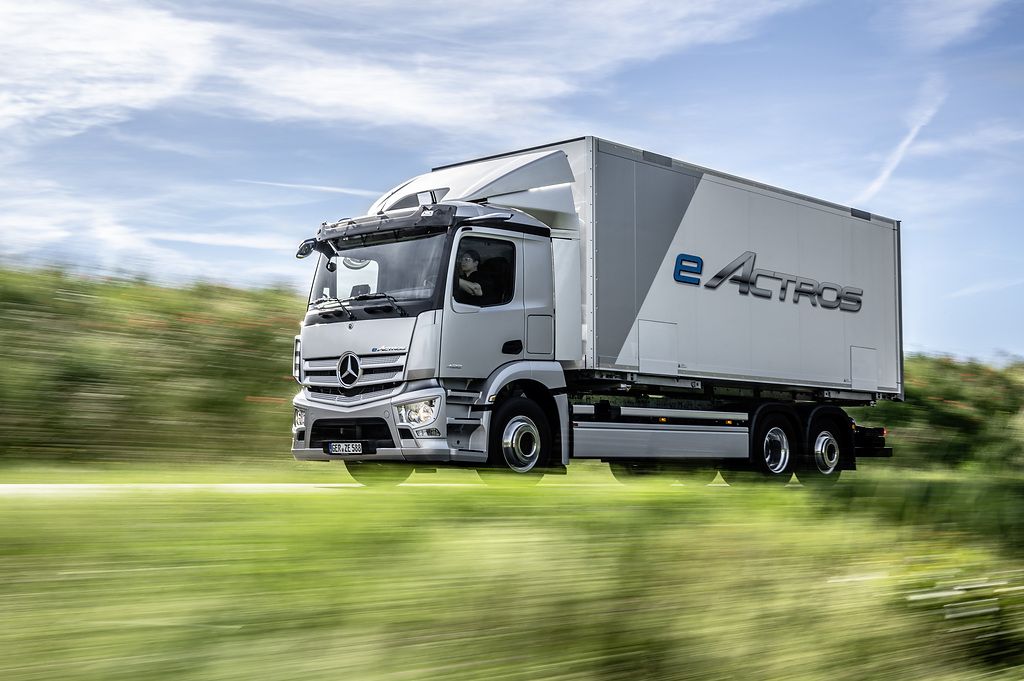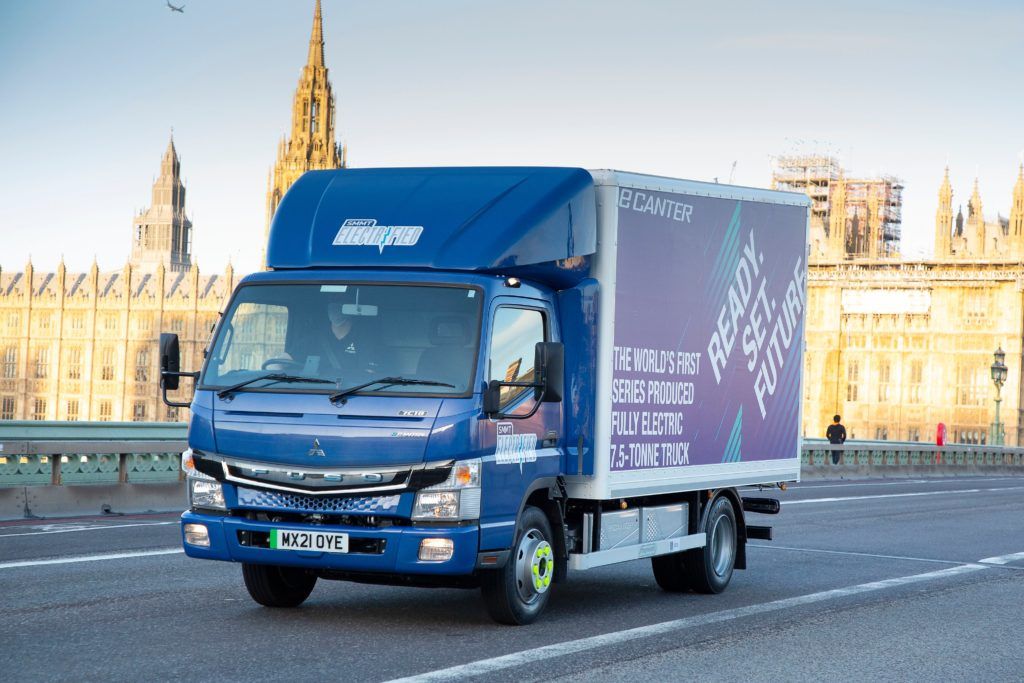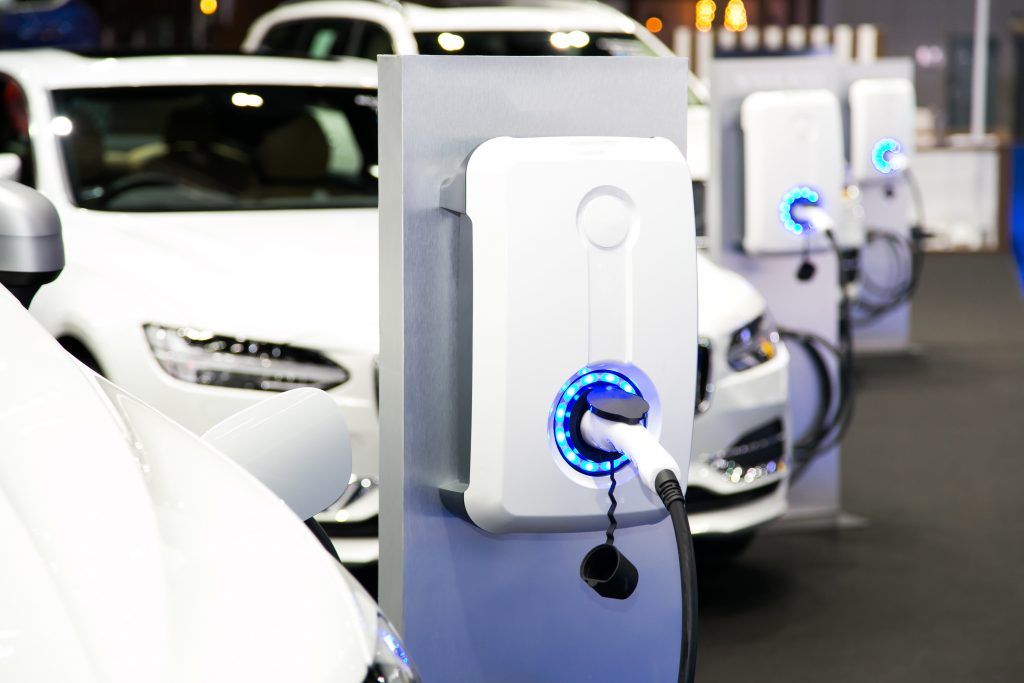James Venables – eConsultancy Manager at Mercedes-Benz Trucks UK – shares his views on the technology that will be powering the UK’s trucks in future.
Will it be electricity from an on-board battery, or charge from a hydrogen fuel-cell that powers the trucks of tomorrow? That’s the question which currently unites the truck industry, the energy sector and politicians across the UK and Europe.
One thing is clear – we cannot let our customers down, because to do so would be to let the public down. Operators rely on truck manufacturers for the trucks that move the world; delivering goods, collecting rubbish and supplying construction materials…
Fortunately, we have 125 years’ experience, having sold the first Daimler truck in London in 1896. That vehicle was designed to operate on as many as three fuels: gasoline, coal gas and lamp fuel. Operators today face similar choices; while the vast majority of heavy goods vehicles (HGVs) sold in the UK run on diesel, some use biofuels such as Hydrotreated Vegetable Oil and Gas-To-Liquid to decarbonise their operation. A growing handful operate battery-electric trucks – the world’s first series-produced 7.5-tonne truck, the FUSO eCanter, has been in operation in London since 2018.
Part of the global Daimler Truck family, Mercedes-Benz Trucks UK supports a dual-track decarbonisation strategy. We’re one of the world’s largest commercial vehicle manufacturers, and we’re committed to the Paris Climate Agreement. Our ambition – to offer only new vehicles that are carbon-neutral in driving operation by 2039 – has been matched by the UK Government, which plans for all new HGVs to be zero-emission by 2040.

To successfully decarbonise Britain’s fleet of HGVs requires not only an understanding of the different use cases of trucks, but success in three key areas. When choosing their vehicles, an operator makes a rational purchasing decision factoring in the total cost of ownership and the environmental impact of their vehicles. To support the growth of battery-electric trucks, the Department for Transport offers the Plug-in Truck Grant. At the time of writing, the grant is worth £16,000 for an operator’s first 10 eligible trucks below 12t, and £25,000 for its first five eligible trucks above 12t.
The second part of the equation is product availability. We plan to electrify our entire portfolio with both battery-electric and hydrogen-based trucks. Why? Simple because of the diverse applications and tasks that trucks and their operators face. Hydrogen-based drives can be the better solution for flexible and demanding applications in heavy-duty transport and long-haul applications, whereas battery electric trucks are better suited to lighter loads and shorter, predictable routes.
Our work has already begun. Since 2018, operators have covered several million miles in our battery electric FUSO eCanter light-duty trucks around the world, and following extensive testing, the first production Mercedes-Benz eActros trucks are now arriving in the UK. The low-entry Mercedes-Benz eEconic will follow later this year, and the battery-electric eActros Long Haul arrives in 2024. On the hydrogen side, the fuel-cell Mercedes-Benz GenH2 Truck prototype has been undergoing intensive testing since last year – both on our in-house test track and on public roads – and our goal is to launch the series production truck in 2027.

The third and final part of the transition to zero-emission trucks is infrastructure. Operators in 1896 chose gasoline as it was readily available from a chemist. Today’s operators may fill up with diesel at the services on the road, or they may have bunkers at their depots. Either way, the availability of a corresponding infrastructure is decisive for a successful conversion to zero-emission technologies.
We foresee three different charging scenarios for battery electric truck operators; depot, opportunity, and public hub, depending on the use case. Urban distribution operations are well suited to depot charging, and our eConsulting team recommend charging partners. Long-haul operations carrying heavier cargo will need roadside charging, and the Society of Motor Manufacturers & Traders (SMMT) estimates there will need to be 2,450 roadside eTruck recharging stations by 2025, and 8,200 by 2030. A joint investment of 500 million euros by Daimler Truck, TRATON Group and Volvo Group will install at least 1,700 high-power chargers across Europe and the UK over the next five years, enabling truckers to recharge whilst taking their 45-minute mandatory rest period. When it comes to hydrogen infrastructure, we’ve also signed a memorandum of understanding with BP to roll-out up to 25 hydrogen refuelling stations across the UK by 2030, each supplied by green hydrogen.
As you can see, collaboration is key. Only with the enormous tailwind of numerous partners from industry and politics will we successfully transition to zero-emission trucks. But we’re determined to keep the world moving, and clean up the air that we all breathe.
Images courtesy of Mercedes-Benz Trucks UK.








